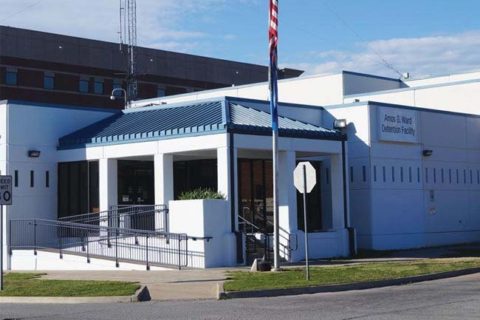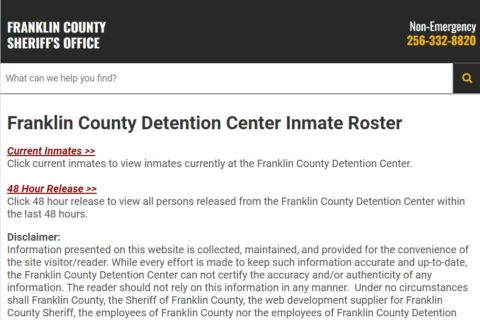It is known that incarceration is different between males and females. Generally, female inmates do not make options simply based on right or wrong. Female inmates commonly make choices based on their connections and the needs of others.
According to some studies, in a woman’s life, the issues which form the foundation of female identity are attachment, connection and interdependence. There are some important specific considerations to deal with female inmates. To know some specific considerations when dealing with female inmates, you can dive into our post below.

Some Important Considerations When Dealing with Female Inmates
When females are housed, they are indeed removed from their relationships with others (family, friends, significant others). Despite incarceration, networks continue to be prominent in their lives.
According to a journal posted by the Department of Corrections Minnesota, there are some findings that become specific considerations that correctional facilities consider when dealing with female inmates.
Female inmates tend to get close and probably invade personal space. Generally, they solve their problems by talking through issues. They also tend to gain physically close due to their need for connection.
It is natural for females to approach as a group and take on each other’s cause. However, if it disturbs jail rules, the correctional officer may need to set the boundaries, but understand the behaviour.
Here are some important specific considerations when dealing with female inmates, according to Department of Correction Minnesota:
1) Findings on Pathways to Crime
There are four pathways intertwine to bring females into the criminal justice system, including:
-
- Abuse
- Poverty
- Addiction
- Dysfunctional Relationships
Of course, the males also experience those circumstances. When combined, those become a trajectory for females into antisocial behaviours and criminal lifestyles.
2) Findings on Trauma
Talking about trauma, females is going to happen more often to experiences this through incest or domestic violence. Generally, women and girls who have experienced childhood abuse frequently find themselves in adult relationships that are characterized by physical and sexual abuse. The females who are experiencing abuse and trauma can result in substance abuse and criminality.
Some things may happen on female inmates who have trauma:
-
- Female inmates may misuse their sexuality while in the facility due to prior sexual abuse and/or dysfunctional relationships.
- Some female inmates use sexual behaviour that may have worked in the past to influence their situation.
- Some female inmates may have a long-standing pattern of using sexual conduct to cope with their circumstances.
Here are the strategies to deal with female inmates who have trauma:
-
- Make sure to recognize and address sexual behaviour with inmate immediately.
- Strength inmate dress code rules, regarding gender.
- Try to document incidents and give sanctions, as appropriate.
- Inform other staff of those events.
- Always discuss incidents with your supervisor.
3) Findings on Emotions
When issues happen, most females may tend to become overwhelmed and emotionally involved. Well, this emotional response will decrease when females talk about issues, though they are not concerned about solutions immediately.
Stress in females actually produces a reaction in the emotional center of the brain. With talking, it will stimulate the production of serotonin and relaxes the brain and clearer thinking begins.
Some things may happen on female inmates who have tense emotion:
-
- Female inmates tend to be more verbal and probably have emotional outbursts.
- Some female inmates probably want to discuss issues, know that you understand their concerns and verbalize their problems.
- Premenstrual syndrome and hormonal changes probably add to strong emotional reactions for some females.
Here are the strategies to deal with female inmates who have tense emotion:
-
- You can try to tell her to take a break until she calms down when a female inmate has an emotional outburst. Then, the staff can talk with her later.
- Make sure to ask her to tell you the reasons for the emotional outburst.
- Try to use ‘active listing’ and reflect back what you are hearing her say.
- Ensure that she may only want to talk about the issues and is not importantly looking for a solution.
4) Findings on Mental Health
According to research, it reveals that approximately 12.2% of females in jail really have severe psychiatric disorders. Most common diagnoses are substance abuse and post-traumatic stress disorders (PTSD).
The common psychotic disorders that most female inmates have include major depression, schizophrenia, anxiety, bipolar and obsessive-compulsive disorders.
Some things may happen on female inmates who have mental health issues:
-
- Female inmates who have mental health issues may try to isolate themselves from others.
- Sleeping issues are common that females with mental issues experience.
- Female inmates who have mental health issues may have issues in hygiene and self-care.
- Mental health conditions can cause over or under-reactions to issues or people
Here are the strategies to deal with female inmates who have mental health issues:
-
- Try to set aside time for staff to listen and also use communication and feedback.
- Foster female inmates not to isolate them from other inmates.
- Try to offer recreation and other programs to increase their involvement.
- Try to refer inmates to health services when they exhibit severe mental health behaviours.
5) Findings on Security
Generally, housing female inmates deliver unique challenges where they have additional means to hide contraband. Staff probably have concerns regardless of working with female inmates.
Some things may happen on female inmates in security:
-
- There will often be misunderstandings regardless of cross-gender supervision of female inmates.
- Some staff fear that they will be accused of sexual misconduct or boundary infractions.
Here are the strategies to deal with female inmates in security matter:
-
- Male correctional officers may give direct supervision of female inmates and complete well-being checks.
- Be familiar with limits to clothed and unclothed body searches.
- Distribution of underwear and hygiene items must be handled professionally or inmates can use it to make staff uncomfortable.
- All staff should immediately assure inmate compliance with policies that require appropriate dress.
- There should be role model boundaries and communication skills with inmates.
6) Findings on Children
According to some studies, about 79% of female inmates are mothers, most are single parents. It is estimated that 1.3 million minor children have a mother who is housed in a correctional facility.
Some things may happen on children of female inmates:
-
- The children of female inmates want to have contact with their mothers, regarding incarceration.
- The children want more contact with their children when female inmates are stabilized.
- There are often increased contacts with other courts and county agencies regardless of female inmates.
- Children are an important outside connection for females in prison.
Here are the strategies to deal with children of female inmates:
-
- Try to build ways for female inmates to raise their parenting skills such as parenting education and reading programs.
- Put parenting books and resources in your library.
- Make sure to figure out how to make visits more enjoyable or welcoming for kids and promote intense contact.
- Foster female inmates to maintain contact through mailing letters and cards, making crafts items for children.

A bookworm and researcher especially related to law and citizenship education. I spend time every day in front of the internet and the campus library.




